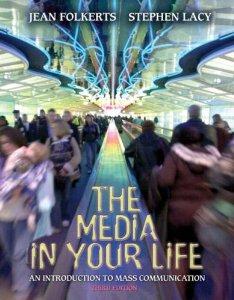Submitted by dilemma on

Every day from different sources information reaches us – from television, radio, press, internet. But is this information accurate, fair and objective? Can we trust media? Does it fall within the moral norms? To these questions different persons probably will answer differently, but one thing is quite clear: media organizations are trying to provide only transparent and real information that would gain readers trust and attract widest possible audience or readership. And also reliability of the information is guided by ethical standards and principles. More about ethics of media can be read in the book written by Jean Folkers and Stephen Lacy “The media in your life”.
Although the book was published almost ten years ago (2004), the ethical issues formulated and discussed in this book still are relevant questions today. The information content of the privacy constraint, hidden (unfathomable) advertising and promotion of public disinformation themes – the authors of the book go into these questions. One of the ethical dilemmas discussed in the book is if information of all kind of content can be made public. For example, if it is ethical to publish video footage of how man is beheaded. According the authors of the book, people don’t want to see dying people or terrorism attacks. On the other hand seeing real world problems helps us realize what is happening in the world and try to take appropriate action, in the case of terrorism attacks – fight with terrorism. Otherwise frequent portrayal of violence and sex in media can create a misleading view of the world around us.It can create a bad influence, especially for young people whose world-view is still developing.Also promotion of harmful products touches lots of ethical problems. Is it ethical that advertisements of alcohol and smoking cigarettes, as fun form of relaxation, can be reached by young persons? Everybody grows at different social environments and has different moral values, so each person's reaction to the same image can be different. The question of the information content which can be presented in the media and who should decide what to present in the media remains open.
Another ethical dilemma mentioned in the book is reveal of personal life. The question is whether it is ethical to write about personal life. For example is it necessary to write that man, who saved drowning child, is homosexual. Such decision is justified by the opinion that reveling of personal qualities can better show personal character. Also in the book differently are valued personal portrayal of public figures and ordinary people – it is written that writing about the lives of ordinary citizens receive more public attention. According to the authors’ ethical journalist takes notice of if a man, about who he write, is an ordinary resident or a public figure and respond to revealing of his personal life facts.
In addition to discussingin the book content of the exposure and privacy issues, the authors also discuss about "hidden" advertising. The paper discusses whether it is ethical or not in films present famous products. After all, viewers do not realize that they are affected by the advertising and unwittingly acknowledge a certain brand. The same question arises with the ethical aspects of hip-hop songs, where rappers mention the names of some products quite often. While rappers say that they sing about whatever they like, although in the song mentioned trademarks leaves mark on the human subconscious for a long time. According to the authors for this situation the best solution would be that media consumers can realize goals of heard song or watched movie.
The accuracy of information is an extremely important topic, too. The media sometimes provide us with inaccurate information and often that information is not being corrected later. The question is this beaver ethical? Media world is dynamic and may not be time to go back to the outdated news to correct them, but I think consumers have the right to know whether their accepted information is correct. Collision with inaccurate information can be also seen in documentaries. It depicts not only the facts, but the fiction too. People remember better visual image than the facts and when the author of the documentary film gives an opinion including the truth and falsification of facts that can leave the viewer with a false view of certain real events. The choice of an appropriate source is also very important for information accuracy. Sources may not always be reliable, and inappropriately selected source cannot prevent to see the important historical details. So how to be sure that the information we get is accurate and reliable, how consumers could know if they are not tricked?
Information certainty and solutions of ethical dilemmas are secured of certain ethical standards of media: some developed ethical codes and hired ombudsmen are adjusted. Jean Folkerts and Stephen Lacy distinguish basic ethical standards - truth, accuracy, fairness, balance and objectivity. These standards are not stable, they are relating on cultural environment, and changing along with society changes. There is also the ethical codes that can be national (the indicative), and can be developed within certain media organization. These ethical codes employees of media organizations are required to follow. Some organizations, in order to ensure greater reliability hire ombudsmen who represent consumers and gives critical approach to certain actions of the organization, which in his opinion was irrelevant. So there is a sufficiently large quantity of various measures to ensure the accuracy and reliability of the media. All in all, consumers can be assured that the information that reaches them is quite accurate.
Summarized by Migle Aliukonyte


